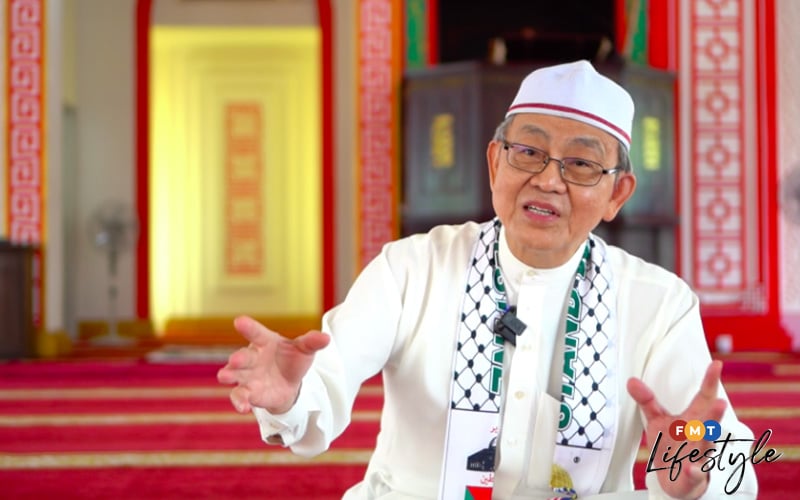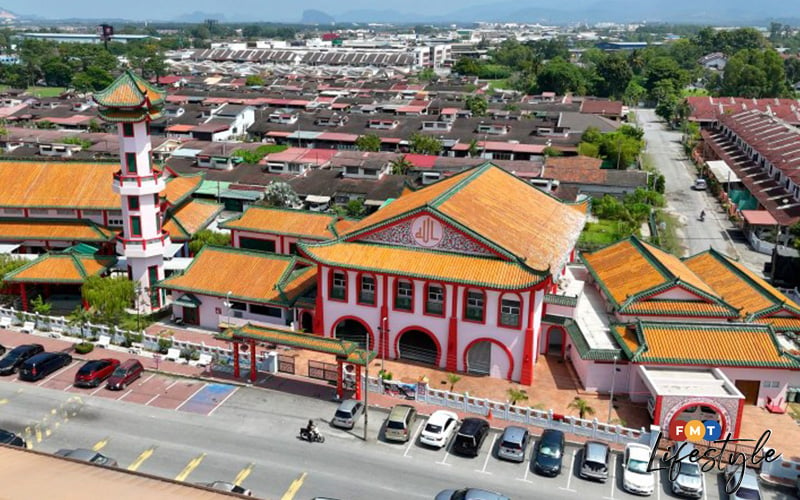
PETALING JAYA: When was the last time you heard of a Chinese New Year celebration being held in a mosque? Pay a visit to Masjid Muhammadiah in Ipoh and you will be able to experience just that.
At first glance, one might assume the majestic pink-and-red monument to be a Buddhist temple. But in fact, this is the city’s sole Chinese mosque, and the second in the country after Kelantan’s Masjid Jubli Perak Sultan Ismail Petra.
Instantly turning heads, Masjid Muhammadiah in Taman Tasek Jaya is also said to be Malaysia’s first mosque to feature 100% Chinese architectural elements in its design.
Its construction was mooted by the Malaysian Chinese Muslim Association (Macma) Ipoh, led by Dr Fadzli Cheah Abdullah. Built in 2013, it now stands as one of the symbols of the country’s rich diversity.

“When I came to Ipoh, there was a calling for me from Allah to do something for the Chinese Muslims in this state,” Fadzli told FMT Lifestyle, explaining that there had only been a small prayer hall available to the community before Macma’s efforts.
Despite his demanding job as the only neurosurgeon in Perak in the 1990s, he was resolute in addressing the absence of Chinese mosques in the state.
With the help of the state government, the mosque was subsequently built in two phases. Today, it can hold up to 1,000 worshippers and is frequented by Muslims of all backgrounds, including Malays and foreigners.
Fadzli, who converted to Islam for marriage, explained that each element of the building’s design – the imported green roof from China; the red pillars inscribed with Chinese characters; fish pond, weeping willows and bamboo – reflect the essence of Chinese culture.
“We wanted to make it an open concept, almost like a garden,” he noted.

Beyond its architecture, the mosque cultivates cultural harmony through shared celebrations such as Hari Raya Aidilfitri, Dongzhi, Hari Raya Haji and, of course, Chinese New Year – all of which see a significant turnout of Malays, Chinese Muslims, and even non-Muslim Chinese neighbours.
While the first phase of the mosque serves as the main prayer area, the recently completed second phase is for educational and cultural purposes. This is where all major celebrations and associated activities are held, such as the annual traditional Chinese drum performance.
From cooking Chinese dishes together to enjoying the lion dance at the mosque’s entrance, such events allow for the strengthening of social ties within the community. Fadzli shared that during Ramadan, for instance, non-Muslims are invited to break fast together with worshippers.
“We want to send out a message that when you embrace Islam, like I have, you are not ‘becoming Malay’. Even if you’re Chinese, you can retain your culture, your values and heritage, as long as it doesn’t infringe on or clash with our Islamic values,” he said.

And while there are limitations on certain food and drink items during Chinese New Year, for him, the essence of the festivities remains the same.
“Chinese New Year is a time for reunions, and not just for family members. All of us – of different religions, from different cultural backgrounds – should come together as Malaysians.
“Diversity is our strength. But we are also very similar to one another, as all beliefs teach good values.”
Indeed, his faith notwithstanding, the Lunar New Year will always hold a special place in Fadzli’s heart.
“We hope the Year of the Dragon will be another good year,” he said. “Here’s wishing all Chinese, Chinese Muslims, and everyone a very happy Chinese New Year.”
Masjid Muhammadiah
Jalan Musim Bunga,
Taman Tasek Jaya,
31400 Ipoh, Perak
-FMT



No comments:
Post a Comment
Note: Only a member of this blog may post a comment.